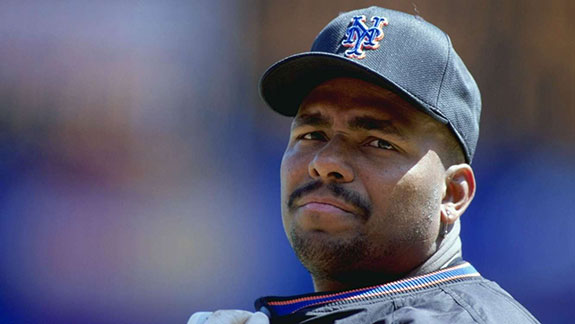
Every once in a while, we do hear about an athlete who’s on the right side of a financial story. Of course, since there are multiple sides to every story, there’s definitely a loser as well; in this case, it’s the New York Mets.
In 2000, the New York Mets owed outfielder Bobby Bonilla a $5.9 million salary, but wanted to cut him loose from the team. So Bonilla’s agent, who happened to sell insurance before becoming a sports agent, negotiated an 8% interest rate on that salary, with annual payments of more than $1.1 million per year — from 2011 until 2035.
The Mets agreed, and so once a year — even though he hasn’t played professional baseball since 2001 — Bonilla receives a check for more than $1.1 million dollars. By the time the agreement is over, he’ll have grossed nearly $30 million dollars.
How in the World Did This Happen?
ESPN, in its reporting about Bonilla’s contract, explains why the Mets would ever consider paying $30 million instead of $5.9 million to Bonilla.
The Mets have never really talked about the deal, but it is well known that their owners, the Wilpons, had many accounts with investor Bernie Madoff. Madoff was returning 12 to 15 percent a year in what we now know were fictional returns. So deferring deals wasn’t a problem because the payout would occur years later and the interest rate would be lower than the money they were (fictionally) getting back from Madoff.
To see the deal as the Mets would have seen it, let’s say the Wilpons put $5.9 million into a Madoff account in 2000 and got a conservative (by Madoff standards) 10 percent annual return. By 2011, when they would have to pay Bonilla for the first time, they would have already grown their pot to $16.83 million. Even with paying off Bonilla every year, they would wind up with a $49 million profit on the deal. Of course, the Madoff returns weren’t real, which complicates this hindsight.
Ouch. That stings.
From their perspective, it makes sense — especially if (presumably) they could have made enough in the 10 years between the signing of the agreement and the first payment to cover the entirety of the deal. But, of course, reality was a bit different.
Is it Really That Amazing for Bonilla?
ESPN decides to ask the question: is it really that great of a deal for Bonilla?
Sure, the gross payout of $29.8 million is higher than the initial $5.9 million, but could Bonilla have more money if he invested that money in 2000 instead?
We did the math by using a conservative strategy of putting that $5.9 million into the market in January 2000, when this deal was struck. We put 60 percent of the money in stocks and 40 percent in bonds and rebalanced the portfolio to those percentages at the start of each year following our gains in each area. Going back historically, we learn that Bonilla would have aggregated $16.5 million by December 2015. Through the deal the Mets gave him, he collected only $5.9 million by December 2015.
This is like when a financial advisor says to you, “If you start investing when you’re 22, and fill up your Roth IRA every year, you’ll be a millionaire when you’re ready to retire.”
Yes, it’s totally true if you project it out based on historical numbers and assumptions about the future, but I certainly don’t fault Bonilla for taking the deal as is. Presumably, he makes less money now than when he was in his active playing days, and he lives in Florida (which has no income tax), so he’s paying fewer taxes.
It’s almost a built-in retirement plan for Bonilla, and there’s something to be said about the security of knowing you’ve got that coming. The closest thing you or I could ever compare it to is whether or not to take the lump sum or an annuity after winning the lottery, which — let’s be honest — we’re probably not going to win.



